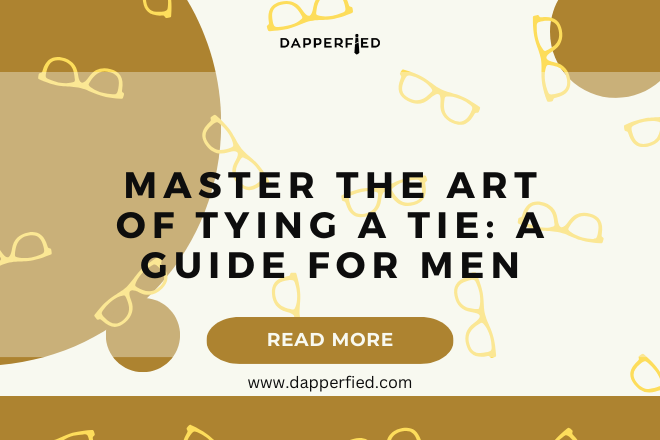
Men's Style
Mastering the Art of Matching Ties with Shirts for Men
When it comes to choosing the right tie for your outfit, understanding the basics of color and pattern is essential. Color can have a significant impact on the overall look and feel of your outfit. It’s important to consider the color of your shirt, suit, and other accessories when selecting a tie. A good rule of thumb is to choose a tie that complements the color of your shirt and suit, rather than matching it exactly. This can help create a more visually appealing and balanced look.
In addition to color, pattern is another important factor to consider when choosing a tie. Mixing and matching patterns can be a bit tricky, but when done correctly, it can add depth and visual interest to your outfit. If you’re wearing a patterned shirt, it’s best to pair it with a solid or subtly patterned tie to avoid clashing. On the other hand, if you’re wearing a solid shirt, you have more freedom to experiment with different patterns and textures in your tie. Overall, understanding how to effectively combine color and pattern can help you create a polished and put-together look for any occasion.
Key Takeaways
- Understanding the basics of color and pattern is essential for coordinating ties with shirts.
- Choosing the right tie width for your shirt collar can enhance your overall look.
- Coordinating ties with different shirt fabrics can create a polished and cohesive outfit.
- Incorporating texture and contrast in your tie and shirt pairings can add a stylish touch to your ensemble.
- Tips for matching ties with different suit colors can help you create a well-coordinated and put-together look.
Choosing the Right Tie Width for Your Shirt Collar
The width of your tie should complement the width of your shirt collar. A general rule of thumb is that the tie should be proportional to the collar. For example, if you have a narrow collar, a skinny tie would be the best choice to create a balanced look. On the other hand, if you have a wider collar, a standard or slightly wider tie would be more suitable. It’s important to consider the overall proportions of your outfit to ensure that everything looks harmonious.
In addition to the collar width, it’s also important to consider your body type when choosing the right tie width. If you have a larger frame, a wider tie would be more flattering, whereas if you have a slimmer build, a narrower tie would be a better choice. Ultimately, the goal is to create a cohesive and well-proportioned look that complements your individual style and physique.
Coordinating Ties with Different Shirt Fabrics
When coordinating ties with different shirt fabrics, it’s important to consider the texture and weight of both the shirt and the tie. For example, if you’re wearing a dress shirt with a smooth and lightweight fabric such as cotton or poplin, you can pair it with a tie that has some texture or weight to create visual interest. A knit tie or a wool tie would be great options for adding some depth to your outfit.
On the other hand, if you’re wearing a shirt with a heavier fabric such as flannel or denim, it’s best to opt for a tie with a similar weight and texture to maintain balance. A silk or satin tie might look out of place with these types of shirts, so it’s important to consider the overall feel and aesthetic of your outfit when coordinating ties with different shirt fabrics. By paying attention to these details, you can create a cohesive and well-coordinated look that showcases your attention to detail and personal style.
Incorporating Texture and Contrast for a Stylish Look
| Texture and Contrast | Stylish Look |
|---|---|
| Use of different fabrics | Creates visual interest |
| Combining smooth and rough textures | Enhances outfit dimension |
| Contrasting colors and patterns | Adds depth to the overall look |
Incorporating texture and contrast into your tie and shirt pairings can elevate your outfit and add visual interest. Mixing different textures can create depth and dimension in your look, making it more visually appealing. For example, pairing a smooth silk tie with a textured linen shirt can create an interesting contrast that adds sophistication to your outfit.
In addition to texture, contrast is another important element to consider when putting together your outfit. Contrasting colors and patterns can create a dynamic and eye-catching look. For example, pairing a bold patterned tie with a solid shirt can create a striking contrast that draws attention to your outfit. By experimenting with different textures and contrasts, you can create a stylish and fashion-forward look that showcases your personal style and attention to detail.
Tips for Matching Ties with Different Suit Colors
When it comes to matching ties with different suit colors, it’s important to consider the overall color scheme and aesthetic of your outfit. For a classic and timeless look, you can’t go wrong with pairing a navy suit with a tie in a complementary color such as burgundy or forest green. These rich and sophisticated colors can add depth and elegance to your outfit.
If you’re looking to make a bolder statement, you can experiment with pairing ties in unexpected colors with your suit. For example, pairing a light grey suit with a vibrant yellow or teal tie can create a fresh and modern look that stands out. It’s important to consider the occasion and dress code when experimenting with different tie and suit color combinations, but don’t be afraid to step outside of the traditional color palette to showcase your personal style.
The Importance of Proportion and Balance in Tie and Shirt Pairings

Proportion and balance are key elements to consider when pairing ties with shirts. The width of your tie should complement the width of your shirt collar to create a harmonious look. Additionally, the length of your tie should be proportional to your body type and suit jacket length. A good rule of thumb is that the tip of your tie should hit right at the top of your belt buckle for a polished and put-together look.
In addition to proportion, balance is also important when coordinating ties with shirts. If you’re wearing a patterned shirt, it’s best to pair it with a solid or subtly patterned tie to avoid overwhelming your outfit. On the other hand, if you’re wearing a solid shirt, you have more freedom to experiment with different patterns and textures in your tie. By paying attention to proportion and balance, you can create well-coordinated and visually appealing tie and shirt pairings that showcase your attention to detail and personal style.
How to Experiment with Bold Colors and Patterns for a Statement Look
Experimenting with bold colors and patterns can add personality and flair to your outfit. If you’re feeling adventurous, try pairing a bold patterned tie with a solid shirt in a complementary color for a statement look that commands attention. Alternatively, you can experiment with pairing a brightly colored tie with a neutral suit for a pop of color that adds visual interest.
When experimenting with bold colors and patterns, it’s important to consider the overall aesthetic of your outfit and ensure that everything looks cohesive. If you’re unsure about how to incorporate bold colors and patterns into your outfit, start by incorporating them in small doses such as through accessories like ties or pocket squares. This can help you ease into experimenting with bolder looks while still maintaining a polished and put-together appearance.

In conclusion, understanding how to effectively coordinate ties with shirts, suits, and other accessories is essential for creating polished and put-together outfits for any occasion. By paying attention to details such as color, pattern, texture, proportion, and balance, you can create stylish and visually appealing looks that showcase your personal style and attention to detail. Don’t be afraid to experiment with different colors, patterns, and textures to create unique and eye-catching outfits that reflect your individuality.
If you’re looking to elevate your style, consider investing in a pair of Sebago Men’s Brattle Oxford shoes. These classic oxfords are a versatile and timeless addition to any wardrobe, perfect for pairing with a variety of outfits. Whether you’re dressing up in a Calvin Klein Men’s Slim Fit Tuxedo or going for a more casual look with a summer jacket, the Brattle Oxfords will add a touch of sophistication to your ensemble. Check out this article on Sebago Men’s Brattle Oxford for more information on these stylish shoes.
FAQs
What are some basic rules for matching ties with shirts for men?
Some basic rules for matching ties with shirts for men include choosing complementary colors, considering the pattern of the shirt and tie, and ensuring that the tie is proportionate to the collar and lapel of the shirt and jacket.
What are some classic color combinations for matching ties with shirts?
Classic color combinations for matching ties with shirts include pairing a solid colored tie with a patterned shirt, choosing a tie that is a shade darker than the shirt, and opting for complementary colors such as a blue tie with a white or light blue shirt.
How can men match patterns on ties with patterns on shirts?
When matching patterns on ties with patterns on shirts, it’s important to ensure that the scale of the patterns differs, such as pairing a small patterned tie with a larger patterned shirt, or vice versa. Additionally, choosing patterns that have a similar color scheme can help create a cohesive look.
What should men consider when matching the tie with the collar and lapel of the shirt and jacket?
When matching the tie with the collar and lapel of the shirt and jacket, men should consider the width of the tie in relation to the width of the collar and lapel. A wider tie works well with a spread collar and wider lapels, while a narrower tie is better suited for a narrower collar and lapel.
Are there any specific guidelines for matching ties with formal or casual shirts?
For formal shirts, such as dress shirts, it’s best to opt for solid colored or subtly patterned ties in classic colors like navy, burgundy, or silver. For casual shirts, such as button-downs, men can experiment with bolder colors and patterns in their ties to add personality to their look.














